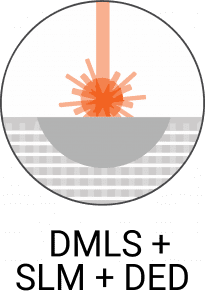

It’s no secret that additive manufacturing (AM) shines in rapidly producing customized parts with unparalleled accuracy. With the ushering in of additive, medical and dental labs can say “goodbye” to antiquated and cumbersome molding processes, and instead rely on highly digitized methods to rapidly-produce complex implants, anatomical models, aligners, and more, all custom-suited to an individual’s exact anatomy.
The production of these highly complex parts can be tricky to scale for mass production though, and the reasoning for that lies in meticulous and tedious post-printing processes. When it comes to something as critical as an anatomical implant for a patient’s health, exactness can never be overlooked. Exactness is critical when finishing medical parts, and with manual processes, that can be a time-consuming feat.
PostProcess Technologies is the internationally renowned leader and pioneer of automated post-printing. Using patented and patent-pending approaches, PostProcess solutions effectively overcome the post-printing bottleneck with a complete blend of proprietary software, hardware, and exclusive chemistry, enabling complete end-to-end digitalization in additive manufacturing for medical with optimal end-part consistency.

PolyJet Support Removal
When exactness and complexity are needed, PolyJet is ideal. While most support removal solutions can damage delicate PolyJet parts, PostProcess solutions use software intelligence to avoid warpage and breakage, empowering medical professionals to print intricate anatomical parts without sacrificing lead times. In fact, PostProcess solutions have been proven to increase PolyJet printing throughput by over 30% compared to traditional manual water blasting.

Metal Surface Finishing
Thanks to processes like DMLS, surgical tools and permanent metal implants alike can be printed in a single build, and be patient-ready in less time than ever before. Unfortunately, most traditional metal surface finishing techniques are too harsh on these sorts of parts and can cause burrs or surface flaws, leading to scrapped medical parts. PostProcess’s metal surface finishing techniques are developed just for additive-manufactured parts, enabling them to achieve ideal Ra values with minimal breakage, no matter the part shape.

Resin Removal
Much like PolyJet, photopolymer processes like SLA, DLP, and Carbon DLS are conducive to printing complex parts with fine feature details. Most often, these print technologies are leveraged for semi-permanent devices like aligners, though the resin removal process is a major downfall that burdens the additive workflow with several safety concerns. PostProcess’s automated resin removal solutions have been proven to finish 5x as many parts as IPA before reaching saturation, effectively enabling higher throughput and more optimally-finished medical parts. Plus, our proprietary resin removal detergent PLM-403-SUB has proven compliance with ISO standard 10933 for the evaluation of biocompatibility.